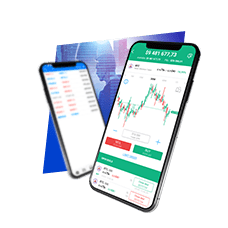

A correlation coefficient of -1 indicates that the currency pairs are perfectly negatively correlated, that is, a higher value for one pair tends to correspond to a lower value for the other. A correlation coefficient of 1 means that they are perfectly correlated, indicating a higher value for one variable tends to correspond to a higher value for the other. The weaker the relationship, the closer the correlation coefficient is to 0. To be an effective trader and understand your exposure, it is important to understand how different currency pairs move in relation to each other. Some currency pairs move in tandem with each other, while others may be polar opposites.
Equally, you could open two short positions on these pairs if you believed that the price of one was about to fall. If the positive correlation was currently strong, you would expect the price of the other to fall alongside it. A trader can use also different pip or point values for his or her advantage. They have a near-perfect negative correlation, but the value of a pip move in the EUR/USD is $10 for a lot of 100,000 units while the value of a pip move in USD/CHF is $9.24 for the same number of units. This implies traders can use USD/CHF to hedge EUR/USD exposure.

These pairs typically move together, but in this example, they moved in opposite directions. Improve your knowledge of currency pairs and what affects them, such as inflation, interest rates and other economic data. Commodities can hedge or be hedged by currencies when there is a strong correlation present in the same way that currencies hedge each other.
Correlation of Forex with Gold and Oil
In this case, it is important to adjust the size of the positions in order to avoid a serious loss. Correlations can provide opportunities to realise a greater profit, or they can be used to hedge your forex positions and exposure to risk. The imperfect correlation between the two different currency pairs allows for more diversification and marginally lower risk.
The tool analyzes the first seven instruments in the “Market Watch». This tool can analyze any trading instrument’s correlation with any other six ones provided by your broker. Make two individual columns, each labeled with one of these pairs. Then fill in the columns with the past daily prices that occurred for each pair over the time period you are analyzing. The best way to keep current on the direction and strength of your correlation pairings is to calculate them yourself. Software helps quickly compute correlations for a large number of inputs.
The correlation of currencies allows for better evaluation of the risk of a combination of positions. Correlation measures the relationship existing between two currency pairs. For example, it enables us to know whether two currency pairs are going to move in a similar way or not. Correlation is the ability of one trading instrument to repeat the directional movements of another instrument. The correlation of currency pairs is a phenomenon that occurs when the price movements of several currency pairs are similar. It may be important to know whether the open positions in a portfolio are correlated.
A commodity may move much more in percentage terms than a currency, so gains or losses in one may not be fully offset by the other. Correlation allows traders to hedge positions by taking a second trade that moves in the opposite direction to the first position. A currency hedge is achieved when gains from one pair are offset by losses from another, or vice versa. This may be useful if a trader doesn’t want to exit a position but wants to offset or reduce their loss while the pair pulls back. If the correlation is 0, the movements between two currency pairs are said to have uh ZERO or NO correlation, they are completely independent and random from each other.
Stock and Bond Correlation Explained
If two currency pairs go up at the same time, this represents a positive correlation, while if one appreciates and the other depreciates, this is a negative correlation. Spread bets and CFDs are complex instruments and come with a high risk of losing money rapidly due to leverage. 77% of retail investor accounts lose money when spread betting and/or trading CFDs with this provider.
The foreign exchange, or Forex, is a decentralized marketplace for the trading of the world’s currencies. On the other hand, holding long EUR/USD and long AUD/USD or NZD/USD is similar to doubling up on the same position since the correlations are so strong. In Forex markets, correlation is used to predict which currency pair rates are likely to move in tandem.

You can find many websites that calculate the forex pairs correlation table. However, there are practically no trading tactics or investment research based on correlation. While the pairs won’t always move in exactly the same direction, they do move mostly together. In comparison, the GBP/USD and EUR/GBP have a strong negative correlation at -90, meaning they move in opposite directions much of the time. A correlation coefficient represents how strong or weak a correlation is between two forex pairs. Correlation coefficients are expressed in values and can range from -100 to 100, or -1 to 1, with the decimal representing the coefficient.
Therefore, they tend to move together in the same direction, although this is not always the case, as we will see further on in the article. Meanwhile, the EUR/JPY and AUD/USD have no matching currencies. In fact, the Eurozone, Japan, Australia and the US all have distinct and separate economies. Therefore, the correlation between these pairs tends to be lower.
Currency correlation indicator MT4
If the price of AUD/USD rises, you would need to sell more US dollars in order to buy a single Australian dollar – which means that the Australian dollar is strengthening compared to the US dollar. Correlation is a statistical measure of how two securities move in relation to each other. Highlight all of the data in one of the pricing columns; you should get a range of cells in the formula box. Next, we open the Inputs tab and type in the SubSymbol line the pair, whose chart we want to overlay on top of the chart displayed in the window, and click on the OK button. To start the analysis, select your working timeframe — the matrix updates when you switch between different timeframes. In the directory that opens, I recommend opening the Examples folder and loading the files from the indicators archive.
If the correlation is high and positive then the currencies move in the same way. Correlation ranges from -100% to +100%, where -100% represents currencies moving in opposite directions and +100% represents currencies moving in the same direction. Stay on top of upcoming market-moving events with our customisable economic calendar.
The Pearson correlation coefficient is the most used measure of currency correlations in the forex market, but others include the intraclass correlation and the rank correlation. In the context of currency correlations, the Pearson correlation coefficient is a measure of the strength of a linear relationship between two different forex pairs. Many traders will use a spreadsheet computer program to calculate the Pearson correlation coefficient, because the method for doing so manually is very complex. Professional Forex traders often use hedging strategies to reduce the high risk and make a good profit from the initial investment at the same time.
You could use the negative correlation to hedge your exposure to risk in one of the underlying currency pairs. The strength of a currency correlation depends on the time of day, and the current trading volumes in the markets for both currency pairs. Currency pair correlations show whether there is a relationship between the value of two separate forex pairs. Here, we explain what a currency correlation is and how to trade forex correlations with some worked examples.
How to trade forex correlation pairs
This way, the risk on the trade and risk to the account is controlled. Perfect negative correlation (a correlation coefficient of -1) means that the two currency pairs will move in the opposite direction 100% of the time. Perfect positive correlation (a correlation coefficient of +1) implies that the two currency pairs will move in the same direction 100% of the time. You can take a position on currency correlations with financial derivatives such as CFDs and spread bets. An example of a positively correlated hedge would be if you thought that EUR/USD and GBP/USD were about to break their positive correlation.
Now, if we were not right, we can compensate for the potential loss yielded by the EURUSD through the profit generated by the USDJPY trade. The correlation coefficient should be considered when calculating the risks. Pick up the instruments that have the biggest by the module correlation coefficient. In our case, they are EURUSD and USDJPY currency pairs with a correlation of -0.9. For technical analysis, we superimpose the price charts of these two trading assets.